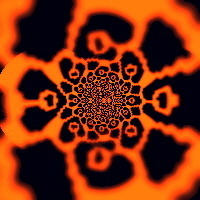Benefits and Costs
Although it is possible to simultaneously use Baked GI lighting and Precomputed Realtime GI, be wary that the performance cost of rendering both systems simultaneously is exactly the sum of them both. Not only do we have to store both sets of lightmaps in video memory, but we also pay the processing cost of decoding both in shaders.
The cases in which you may wish to choose one lighting method over another depend on the nature of your project and the performance capabilities of your intended hardware. For example, on mobile where video memory and processing power is more limited, it is likely that a Baked GI lighting approach would be more performant. On ‘standalone computers’ with dedicated graphics hardware, or recent games consoles, it is quite possible to use Precomputed Realtime GI or even to use both systems simultaneously.
The decision on which approach to take will have to be evaluated based on the nature of your particular project and desired target platform. Remember that when targeting a range of different hardware, that often it is the least performant which will determine which approach is needed.
Enabling Baked GI or Precomputed Realtime GI
By default, both Precomputed Realtime GI and Baked GI are enabled in Unity’s Lighting panel (Lighting>Scene). With both enabled, which technique is used can then be controlled by each light individually (Inspector>Light>Baking).
Using both Baked GI and Precomputed Realtime GI together in your scene can be detrimental to performance. A good practise is to ensure that only one system is used at a time, by disabling the other globally. This can be done by unchecking the box next to either Precomputed Realtime GI or Baked GI from Unity’s lighting panel (Lighting>Scene). Now only the checked option will be present in your scene, and any settings configured per-light will be overridden.
Per-Light Settings
The default baking mode for each light is ‘Realtime’. This means that the selected light(s) will still contribute direct light to your scene, with indirect light handled by Unity’s Precomputed Realtime GI system.
However, if the baking mode is set to ‘Baked’ then that light will contribute lighting solely to Unity’s Baked GI system. Both direct and indirect light from those lights selected will be ‘baked’ into lightmaps and cannot be changed during gameplay.
Point light with the per-light Baking mode set to ‘Realtime’.
Selecting the ‘Mixed’ baking mode, GameObjects marked as static will still include this light in their Baked GI lightmaps. However, unlike lights marked as ‘Baked’, Mixed lights will still contribute realtime, direct light to non-static GameObjects within your scene. This can be useful in cases where you are using lightmaps in your static environment, but you still want a character to use these same lights to cast realtime shadows onto lightmapped geometry.
Baked lighting
Baked Lights are Light components which have their Mode property set to Baked.
Use Baked mode for Lights used for local ambience, rather than fully featured Lights. Unity pre-calculates the illumination from these Lights before run time, and does not include them in any run-time lighting calculations. This means that there is no run-time overhead for baked Lights.
Unity bakes direct and indirect lighting from baked Lights into light maps (to illuminate static GameObjects) and Light Probes (to illuminate dynamic Light GameObjects). Baked Lights cannot emit specular lighting, even on dynamic GameObjects (see Wikipedia: Specular highlight for more information). Baked Lights do not change in response to actions taken by the player, or events which take place in the Scene. They are mainly useful for increasing brightness in dark areas without needing to adjust all of the lighting within a Scene.
Baked Lights are also the only Light type for which dynamic GameObjects cannot cast shadows on other dynamic GameObjects.
Advantages of baked lighting
High-quality shadows from statics GameObjects on statics GameObjects in the light map at no additional cost.
Offers indirect lighting.
All lighting for static GameObjects can be just one Texture fetched from the light map in the Shader.
Disadvantages of baked lighting
No real-time direct lighting (that is, no specular lighting effects).
No shadows from dynamic GameObjects on static GameObjects.
You only get low-resolution shadows from static GameObjects on dynamic GameObjects using Light Probes.
Increased memory requirements compared to real-time lighting for the light map texture set, because light maps need to be more detailed to contain direct lighting information.
Technical details
For baked Lights, Unity precomputes the entire light path, except for the path segment from the Camera to the Surface. See documentation on Light Modes for more information about light paths.
ref : https://unity3d.com/kr/learn/tutorials/topics/graphics/choosing-lighting-technique?playlist=17102
ref : file:///F:/Program%20Files/Unity/Editor/Data/Documentation/en/Manual/LightMode-Baked.html
'게임엔진(GameEngine) > Unity3D' 카테고리의 다른 글
| 네비게이션 메쉬(NavMesh, NavMesh Agent, Off-Mesh Link, NavMesh Obstacle) (1) | 2017.11.18 |
|---|---|
| 유니티에서 알아보는 Lightmapping 과 Final Gather & GI (0) | 2017.11.12 |
| AddInstanceProperties job with hash: ce62aefc8a3f22e61195f7c7bfa3e55a failed with exit code 5. (0) | 2017.11.10 |
| 안드로이드 화면 회전[Unity3D] (0) | 2017.11.02 |
| Texture Type 과 텍스쳐 타입 세부 설정들[Unity3D] (0) | 2017.11.02 |


